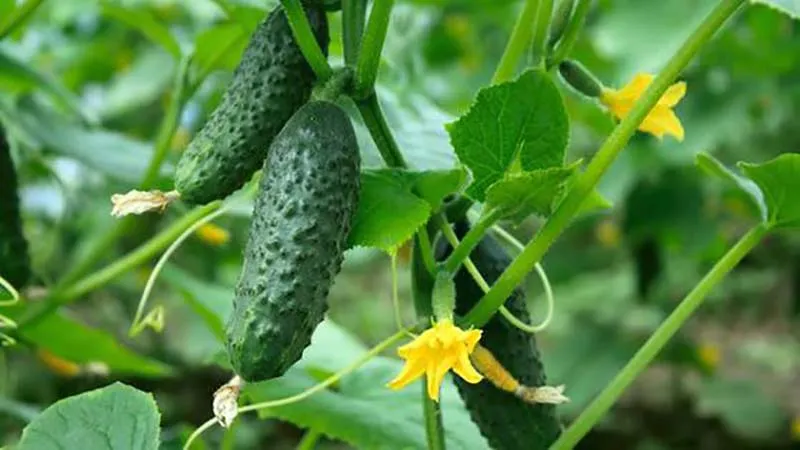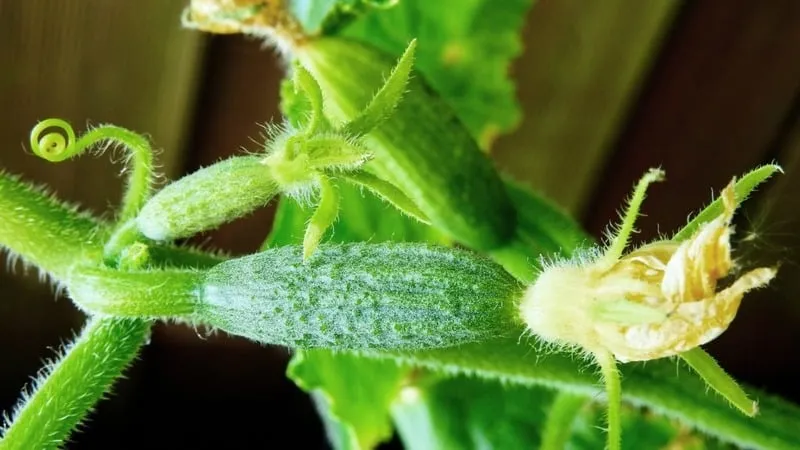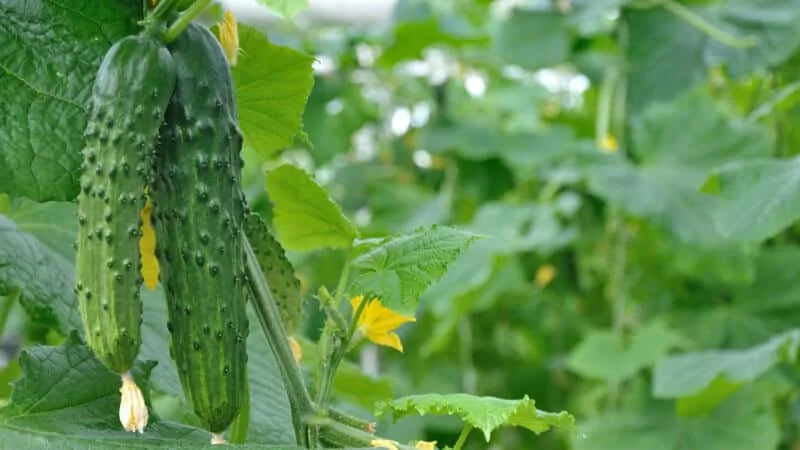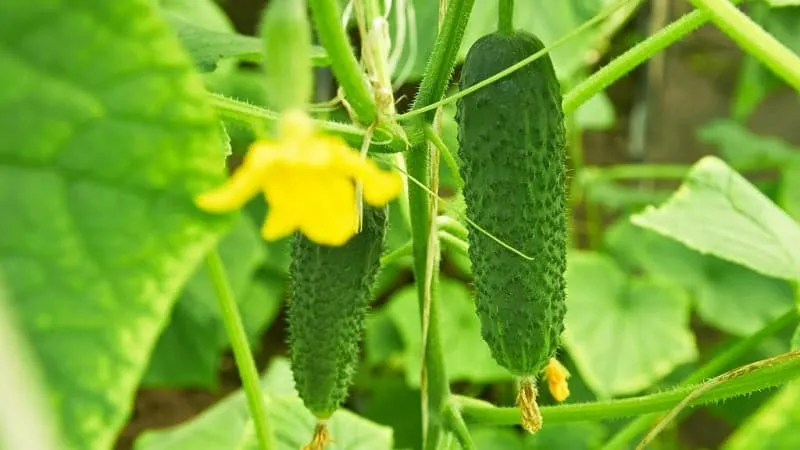More and more city dwellers are growing not only flowers but also vegetables on their balconies. Cultivating cucumbers on your loggia is achievable even for inexperienced gardeners. The key is to approach the task wisely, follow planting and care rules, and a bountiful harvest of fresh cucumbers will be guaranteed.
After reading this article, you will learn how to grow cucumbers on your balcony, which varieties are suitable for this purpose, their unique features, and proven tips for a successful harvest.
Table of contents
Choosing the Right Variety for Balcony Cultivation
Not every cucumber variety is suitable for indoor growing. The seed package must explicitly state that it is intended for balcony or indoor cultivation.

Choose cucumbers that are:
- self-pollinating for balconies;
- tolerant to low sunlight — balcony plants receive much less light than garden beds;
- small-leaved to prevent self-shading;
- bush-type — these have shorter lateral shoots and internodes.
Best Self-Pollinating Cucumber Varieties and Hybrids for Balconies
Specially bred balcony varieties and some greenhouse hybrids are ideal for indoor cultivation. Here are the most popular and well-reviewed options.
Hummingbird
This gherkin-type hybrid does not require pollinators. The plant has small leaves, short lateral shoots, and compact internodes with 3 to 10 ovaries. Highly productive, it produces slightly spiny, slightly ridged, spindle-shaped cucumbers, 5-8 cm long and weighing up to 80 g.
The hybrid features an interesting watermelon-like color pattern. The first fruits appear as early as 40 days after sowing. Hummingbird is low-maintenance and tolerates shade well.
Another advantage is its high resistance to common diseases. Pest infestations are rare.
Hummingbird is excellent for pickling.
Urban Cucumber
If space is extremely limited, Urban Cucumber is the perfect choice. This hardy and low-maintenance hybrid produces gherkins in clusters, with 4 to 10 ovaries per node. Fruits measure 10-12 cm and weigh up to 95 g.
An early-maturing variety — fruits ripen just 40 days after planting — and highly productive, yielding cucumbers over an extended period.
Urban Cucumber is highly resistant to common cucumber diseases. Delicious both fresh and pickled.
Debut
A self-pollinating, early-maturing, high-yield hybrid. The slightly ridged, cylindrical cucumbers grow 12-14 cm long and weigh up to 100 g. The first harvest is ready 45 days after germination.
The plant is compact, with clustered ovaries. It requires minimal care and has good disease resistance. Debut is not suitable for pickling but has excellent fresh flavor.
April
A self-pollinating, early-maturing hybrid — fruits begin ripening 45 days after sowing. The plant is compact and bushy. Cucumbers have pronounced ridges and white spines, weighing 200-250 g. With proper care, yields can reach 15 kg per m².
Drawbacks: not ideal for winter pickling and moderately susceptible to diseases.
Note! If fruits are not harvested on time, they will overgrow and turn yellow.
Balagan
This hybrid is perfect for windowsills or balconies. Its small leaves prevent self-shading, the root system is compact, and internodes are short, bearing 3 to 9 ovaries.
Balagan is early-ripening — harvest begins on day 41. Fruits are small, up to 10 cm long and 85 g in weight, and resist overgrowth. The hybrid tolerates low light and drought well and is disease-resistant.
Swallowtail
Swallowtail is favored by those who prefer larger cucumbers, reaching 12 cm in length and 110 g in weight. This early-maturing, self-pollinating hybrid has clustered flowers, short lateral shoots, and internodes with up to 11 blossoms.
Low-maintenance and resilient. Its excellent flavor is preserved when pickled or marinated.
Calendar

A high-yield, self-pollinating hybrid. Known for its disease resistance and outstanding taste. The gherkins grow up to 10 cm long and weigh 80-90 g, with white spines and slight ridges. Calendar cucumbers are great both fresh and pickled.
Zozulya
The most popular cucumber hybrid for balconies and gardens. Greenhouse yields are significantly higher than those in open soil.
The plant is compact and bushy, producing cylindrical, slightly ridged cucumbers 20-22 cm long with an average weight of 220 g. Zozulya is resistant to diseases.
The cucumbers are non-bitter, ideal for fresh consumption and salads. Not suitable for pickling.
Elegant
An early-maturing variety, with the first harvest ready 40 days after germination. The plant is moderately vining, producing 5 to 7 lateral shoots. Highly resistant to powdery mildew, bacterial wilt, and olive leaf spot.
Cucumbers grow up to 14 cm long and weigh around 15 g, with smooth skin and fine ridges. Excellent flavor, versatile for salads and pickling.
Balcony Wonder
This hybrid delivers high yields indoors and boasts exceptional flavor. The plant is weakly vining and medium-sized, with a compact root system, making it suitable for pots and hanging planters.
Balcony Wonder is low-maintenance, shade-tolerant, and disease-resistant. The gherkins grow up to 8 cm long and weigh about 60 g, with a pleasant taste and bright aroma. Enjoy them fresh or pickled.
Growing Tips

Successful cucumber cultivation depends on following planting guidelines, expert advice, and proper agronomy:
- Select seeds specifically bred for balcony growing.
- Maintain the right microclimate — cucumbers love warmth and hate drafts.
- Use grow lights if natural light is insufficient.
- Water regularly with lukewarm water.
Planting methods for indoor cultivation mirror those for outdoor gardening:
- Place seeds on a damp cloth soaked in a weak potassium permanganate solution for 15 minutes, rinse, and leave on a moistened napkin to sprout.
- Prepare loose, fertile, well-fertilized soil, also treated with potassium permanganate.
- Once sprouted, plant seeds gently in containers.
- Water with warm water, maintain temperatures at +21…+22°C, and fertilize as needed.
- After the third leaf appears, transplant seedlings into larger containers and move them to the balcony.
- Install a trellis or netting for vines to climb.

After transplanting, continue care: daily watering, fertilizing every 10 days, and maintaining a stable microclimate.
As vines grow, tie them to supports to prevent breakage, and pinch lateral shoots. Loosen and moisten soil around stems periodically.
Note! Harvest cucumbers once they reach their typical size. Overgrown fruits weaken the plant, while timely picking encourages further yield.
Conclusion
With dedication and proper care, the first cucumbers will appear on your balcony just two months after sowing.
Growing cucumbers at home is possible year-round. The key is choosing the right variety and following expert recommendations. Happy harvesting!







